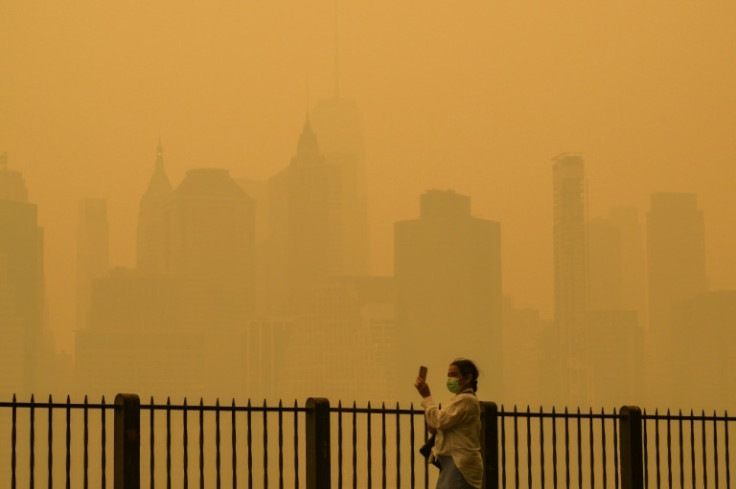Canada Wildfires 2023: Can COVID-19 Masks Protect You From Smoke, Pollution?

KEY POINTS
- N95 and KN95 masks are effective against inhaling wildfire smoke, according to an expert
- A Canadian respirologist said simple cloth masks and other cheap alternatives are not effective
- New York City Mayor Eric Adams urged vulnerable residents to use high-quality masks
As thick smoke from Canadian wildfires blankets the eastern U.S., health experts weighed in on whether the face masks used in the COVID-19 pandemic can help protect people from air pollution.
Marina Vance, Ph.D., an assistant professor in the environmental engineering program at the University of Colorado Boulder, told Healthline people affected by wildfire impact should use the N95 masks.
"N95 masks are the type of face covering protection that I would recommend for somebody who is outside during the air pollution caused by wildfires," Vance said.
Vance also suggested KN95, which protects people from poor air quality, adding that both masks are "very efficient" and she "would trust them both."
A Canadian doctor said simple cloth masks, scarves and other cheap alternatives aren't effective in protecting people from air pollution.
In an interview with Yahoo Canada, John Granton, a respirologist at Toronto General Hospital, said small particulate matter found in the smoke is "where a lot of the toxic stuff lives."
"That's not filtered by your upper airway, that gets access to your lower airway and into your bloodstream even — and that's where the danger lies," Dr. Granton said.
"That can cause asthma attacks, can cause heart attacks, can contribute to hospitalizations and has long-term health outcomes," Dr. Granton added.
Dr. Granton also reminded people to stay indoors and avoid outdoor exercises and other activities.
According to the Washington State Department of Health, surgical masks and masks with filter inserts aren't also helpful.
The health agency said these masks "generally do not provide much protection from the fine particles in smoke."
The authorities noted that if people needed to go outside, they could wear the best mask available and wear it properly.
On Tuesday, New York City Mayor Eric Adams urged vulnerable residents to wear high-quality masks when heading outside.
"If you are an older adult or have heart or breathing problems and need to be outside, wear a high-quality mask (e.g. N95 or KN95)," Adams said, the Washington Post reported.
Meanwhile, New York Gov. Kathy Hochul announced the state government would provide one million N95 masks in public facilities and local governments as early as Thursday morning.
In her Twitter account, Hochul said 400,000 masks would be distributed at transport stations, state parks and the Javits Center, while the rest would be provided to local governments.
On Wednesday, New York City had the worst air quality in the world after its air quality index (AQI) reached 353, which is considered a hazardous pollution level by the Environmental Protection Agency (EPA), according to IQAir, a Swiss service monitoring the air quality of major world cities.
The U.S.' leading financial center has also recorded a Particulate Matter (PM2.5) concentration of 214.6 µg/m³, or about 42.9 times the annual air quality guideline value set by the World Health Organization (WHO).

© Copyright IBTimes 2025. All rights reserved.






















